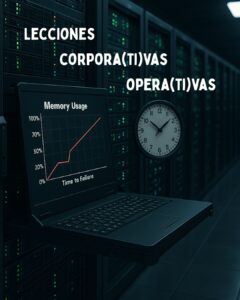
the technologies that have revolutionized the way we interact with the world
Virtualization is a technology that allows you to create a virtual version of a physical resource, such as a calculator, a music player , or a computer. Virtualization is the foundation of cloud computing, as it allows you to create resources in the cloud.
According to Statista, the global virtualization software market size was valued at $11.3 billion in 2020 and is expected to grow to $16.4 billion by 2027.
https://www.statista.com/topics/6795/virtualization/
What is virtualization of physical machines?
Virtualization is the process of creating a virtual copy of a physical resource, such as a server, storage device, or network. This is done using a software layer called a hypervisor. The hypervisor allows multiple virtual machines (VMs) to run on a single physical machine.
Each VM has its own operating system and applications, and it is isolated from the other VMs on the same physical machine. This means that each VM can be used independently, and if one VM fails, the other VMs will not be affected.
Virtualization offers a number of advantages, including:
Improved resource utilization: Virtualization allows you to consolidate multiple physical servers onto a single physical machine. This can save you money on hardware and power costs.
Increased flexibility: Virtualization makes it easy to deploy and manage servers. You can create new VMs quickly and easily, and you can move VMs between physical machines without downtime.
Improved disaster recovery: Virtualization can help you to improve your disaster recovery capabilities. If a physical server fails, you can quickly restore the affected VMs to a new physical server.
Cloud computing, on the other hand, is a technology that has revolutionized the way we store and process data and information. It is a collection of computers distributed around the world that are connected and accessed through the internet to store and process data and information.
According to Statista, the global public cloud services market size was valued at $257.5 billion in 2020 and is expected to grow to $364.1 billion by 2022.
https://www.statista.com/topics/1695/cloud-computing/
Cloud computing offers a number of advantages, including:
Scalability: Cloud computing is highly scalable. You can easily add or remove resources as needed. This is ideal for businesses that experience seasonal fluctuations in demand.
Flexibility: Cloud computing is very flexible. You can choose the services that you need and you can pay for only what you use.
Accessibility: Cloud computing is accessible from anywhere with an internet connection. This makes it ideal for businesses with remote employees.
Benefits of virtualization and cloud computing
The combination of these two technologies offers a number of advantages and benefits to businesses that are making cloud computing increasingly popular, some of these include:
Cost savings: Virtualization and cloud computing can help businesses to save money on hardware, software, and power costs.
Increased efficiency: Virtualization and cloud computing can help businesses to improve their efficiency by automating tasks and streamlining processes.
Improved agility: Virtualization and cloud computing can help businesses to be more agile and responsive to change.
Enhanced security: Virtualization and cloud computing can help businesses to improve their security by isolating applications and data from each other.
https://cloud.google.com/blog/transform/top-cloud-computing-trends-facts-statistics-2023
According to an article by Forbes, cloud computing has become an essential part of modern business operations, with more than 90% of companies using some form of cloud service.
https://cloud.google.com/blog/transform/top-cloud-computing-trends-facts-statistics-2023
The article also states that cloud computing has been instrumental in driving innovation and growth in various industries such as healthcare, finance, and retail.
Virtualization and its disadvantages
Virtualization is a technology that has revolutionized the IT industry and has many advantages, such as increased flexibility, scalability, and efficiency. However, like any technology, it also has its disadvantages.
According to an article from Krypton Solid, some of the disadvantages of virtualization include:
Implementation and licensing costs: Virtualization can be expensive, especially for small businesses that do not have the resources to invest in software and hardware.
https://kryptonsolid.com/las-10-principales-desventajas-de-la-virtualizacion-de-servidores/
Performance overhead: Virtualization introduces some performance overhead due to the additional layer of software that runs on the physical server.
https://barrazacarlos.com/es/ventajas-e-inconvenientes-de-la-virtualizacion/
Single point of failure: Although virtualization can improve the overall system availability, it also introduces a single point of failure. If the physical server that hosts the virtual servers fails, a large portion of the data center operations will be lost.
https://kryptonsolid.com/las-10-principales-desventajas-de-la-virtualizacion-de-servidores/
Complexity: Virtualization can be complex and difficult to manage, especially for users who do not have experience with this technology.
https://barrazacarlos.com/es/ventajas-e-inconvenientes-de-la-virtualizacion/
Virtualization is a powerful technology that can offer many benefits to businesses of all sizes. However, it is important to be aware of the potential disadvantages before implementing virtualization.
In conclusion, cloud computing and virtualization are two technologies that are transforming the way we store and process data and information. The combination of these two technologies offers numerous benefits such as scalability, flexibility, cost savings, and more.
As businesses continue to adopt these technologies, we can expect to see even more innovation and growth in various industries.










